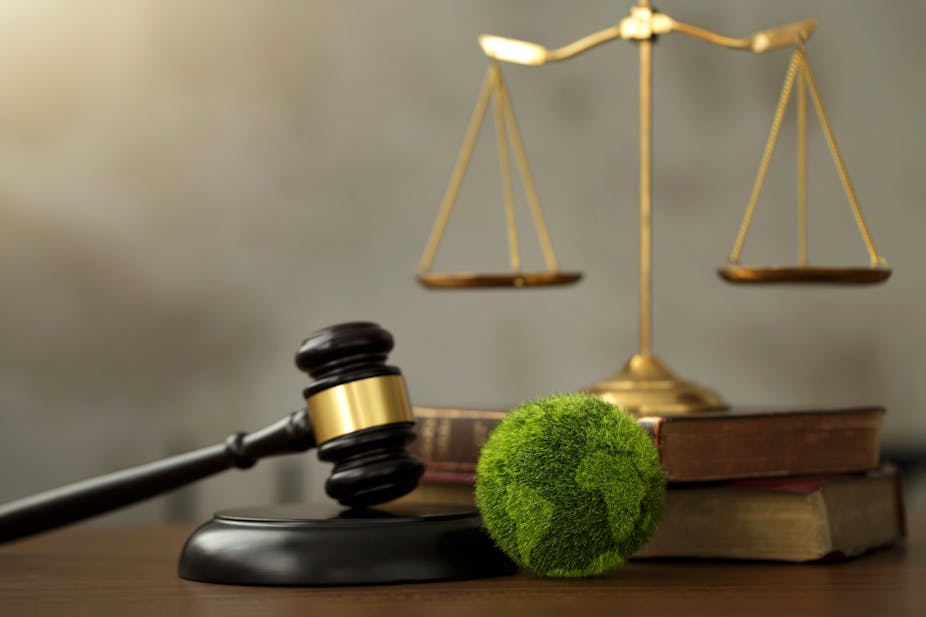Courts around the world are handling an increasing number of climate and environmental cases due to the urgent need to combat worsening warming and ecosystem destruction.
As of December 2022, 2,180 climate-related cases had been filed in 65 jurisdictions, including international courts and tribunals, according to the UN’s 2023 global climate litigation report. People and organisations – including communities, cities, environmental groups and young people concerned about their future – are bringing lawsuits against their governments.
Citizens want governments to take more effective climate action that protects their right to live in a clean, healthy and safe environment. Some lawsuits are successful, others fall by the wayside.
Flagship cases illustrate certain tactics which maximise the chance of a win. There are many community actions against governments currently being brought before the European Court of Human Rights. The outcomes are highly anticipated and three key aspects could inform how climate justice is approached from a legal perspective in the future.
1. Make it personal
Senior Women for Climate Protection Switzerland or KlimaSeniorinnen, a group of women with an average age of 73, has taken the Swiss government to the European Court of Human Rights.
These women are longtime activists who have reduced greenhouse gas emissions in their daily lives. Filled with hope and determination, they aim to demonstrate that older people can be powerful and influential advocates for the climate, even if they may not be physically present in the future.
The women claim that Switzerland is not meeting its Paris agreement climate treaty obligations to prevent global temperature rising above 1.5°C and has failed to protect them from the resulting severe health risks and increased mortality.
The creation of harmonious laws that protect people from the effects of climate change is still a legal impasse. Nevertheless, the European Court of Human Rights will review and analyse the protection and recognition of the legal status of victimhood (with this status, people can assert their legal rights for protection from the effects of climate change).
Once the court decides whether a violation has been made later in 2024, this case could help inform the development of a comprehensive international framework for safeguarding and protecting people from the effects of climate change.
2. Amplify young voices
Led by young people aged between 11 and 24, initiated by Claudia Duarte Agostinho, six Portuguese young people have argued that 32 governments have made insufficient climate targets. They say that this inaction at home and abroad is directly contributing to more frequent and severe heatwaves in Portugal and rapidly degrading the quality of life for younger generations. They argue this violates their human rights.
Children are not typically viewed as capable or influential figures in politics. But the recent surge in youth activism proves that young people can push the limits of what has been traditionally considered to be within the scope of international human rights law.
3. Face the future
In 2021, Damien Careme, the former mayor of Grande-Synthe, a suburb of Dunkirk, France, filed a legal case against the French government. He alleges that the central government failed to fulfil its obligation to protect life by taking insufficient steps to prevent climate change.
Careme argues that he is directly affected by the government’s lack of action because this failure increases the risk that his home could be affected in years to come. This French case could mark an important development in climate litigation.
In 2015, Ioane Teitiota, a resident of the Pacific island Kiribati, failed to demonstrate that the consequences of climate change were an imminent threat to his life and presented an individual concern. Other Pacific communities facing drastic sea level rise and extreme weather events have been calling for world leaders to take urgent climate action.
Careme hopes that the European Court will acknowledge that the failure to address climate change and its consequences violates peoples’ fundamental rights – this case is pivotal because it specifically highlights how he is being individually affected by the breach of these fundamental rights. If successful, this ruling will act as a precedent, not only in all member states of the council, but also globally.
What’s next?
A lack of trust is underlying all three of these cases. Canadians report low trust in government regarding climate change with less than 50% of people trusting their government on climate change issues. Citizens don’t trust that their governments are taking enough action to fight climate change, according to European Investment Bank, whose annual climate survey shows 75% of EU citizens and 69% of UK citizens are more concerned about the climate crisis than they think their government is.
Climate litigation can help to fill gaps in current legislation. Laws don’t cover whether a country’s inaction to take sufficient measures against climate change should be recognised as a violation of human rights or not.
It is expected that the ruling of these cases to trigger debate about state responsibility, human rights and climate change. Any judgements made by the European Court of Human Rights are binding on the countries concerned and could influence other cases. Hopefully, these results have the potential to pave the way for more courts to take into consideration the effects of climate change on people’ lives in the future.

Don’t have time to read about climate change as much as you’d like?
Get a weekly roundup in your inbox instead. Every Wednesday, The Conversation’s environment editor writes Imagine, a short email that goes a little deeper into just one climate issue. Join the 30,000+ readers who’ve subscribed so far.

